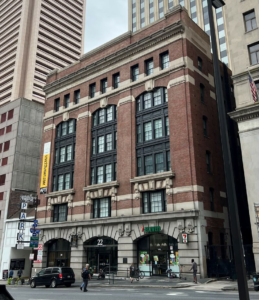With commercial real estate inventory increasing at precisely the same time that affordable residential housing stocks are dwindling, government leaders are embracing a solution that maximizes the opportunities of this unique market dynamic, Adaptive Reuse, otherwise known as Commercial Conversion.
To support commercial conversion efforts nationwide, the US Federal Government is launching numerous initiatives including new financing grants, technical assistance, and the repurposing of suitable government properties. In conjunction with funding to incentivize transit proximity and net zero energy efficiency, these programs afford state and local governments the tools and resources to immediately kick-start development plans to convert vacant commercial buildings into affordable housing stocks.
With over $45 Billion in available funding, primary investment options include the following:
The Department of Transportation (DOT) has released guidance for utilization of the over $35 billion in available lending available via the Transportation Infrastructure Finance and Innovation Act (TIFIA) and Railroad Rehabilitation & Improvement Financing (RRIF) programs to progress transportation projects with the dual goals of increasing affordable housing supply and decreasing emissions. By encouraging conversions and housing projects near public transportation, this guidance is intended to increase housing supply, while encouraging state and local governments to improve their zoning, land use, and transit-oriented development policies (See the Policy Statement for further details).
In addition to below market rate loans, DOT is making it easier for transit agencies to repurpose properties for transit-oriented development and affordable housing projects, including conversions near transit. Going forward, transit agencies may transfer properties at no cost to local governments, non-profit, and for-profit developers of affordable housing. Combined with loans from TIFIA or RRIF programs, this initiative empowers the conversion of properties no longer needed for transit into affordable housing inventory.
The U.S. Department of Housing and Urban Development (HUD) has released updated direction on how the Community Development Block Grant fund can be used to boost housing supply including the acquisition, rehabilitation, and conversion of commercial properties to residential uses and mixed-use development. State and local agencies can access up to five times their annual CDBG allocation in low-cost loan guarantees to fund projects such as the conversion of properties to housing or mixed-use development.
Awards are also available via:
Sale of Surplus Federal Properties
The General Services Administration (GSA) will work with the Office of Management and Budget (OMB) to expand on the Good Neighbor Program. This effort will identify current and upcoming sale opportunities and maintain a public list of current opportunities, to promote the sale of surplus federal properties that buyers could potentially redevelop for residential use.
In addition to funding and property repurposing initiatives, the Federal Government is offering guidance, technical assistance, and tax incentives in the following areas:
To illustrate the full extent to which federal funding and tax credits have previously been leveraged in the financing of such projects, below are the funding breakdowns from successful office-to-residential conversions in Kansas City and Baltimore (Source).
Kansas City Professional Building Lofts Project
Funding Breakdown:
Costing more than $21 million (approximately $32 million in 2023 dollars), nearly one-third of the Professional Building Lofts project was financed through federal and state low-income housing tax credits. A similar amount came from federal and state historic tax credits requiring The Alexander Company (TAC), a Wisconsin-based developer, to preserve the building’s façade.
Baltimore 22 Light Apartments Project
Funding Breakdown:
Two-thirds of the $21 million development cost came from low-income housing tax credit (LIHTC) equity, with the State and City also providing loans, the latter of which was from the HOME Investment Partnerships Program.
With even more federal monies coming onstream now, the above funding breakdowns demonstrate the viability of a robust financing model to stimulate commercial conversion projects.
The ability to seamlessly align numerous policy infrastructure changes (such as new ordinances, zoning code provisions, conditional permits, code exceptions for historic buildings, discretionary approval processes, bylaw incentives, density bonuses, etc.) with the efficient workflows required to expedite the resultant planning, permitting, and code enforcement processes is the balancing act required to turn a smart commercial conversion strategy into practical application on the ground. Key to maintaining this balance is the effective deployment of an enterprise capable permitting and licensing solution.
With your jurisdiction’s unique zoning, building code, and permitting requirements ‘baked’ into your POSSE PLS configuration and civic permitting portal, a firm foundation is established to quickly transform the strategic aims of a commercial conversion initiative into the powerful automation assisted workflows required to turn paper policies into concrete results.
Interested in finding out more, including how POSSE PLS can support your community’s strategic goals?
Contact us today for a no-obligation Discovery Demo.